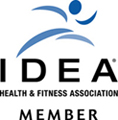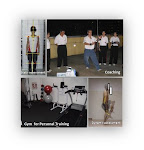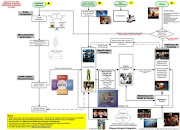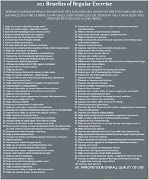Taichi exercise is of low to moderate intensity similar to when jogging or walking, listening to a favourite piece of music might decrease the influence of stress caused by fatigue, thus increasing the ''comfort'' level of performing the exercise; music evokes a ''distraction effect'' during low intensity exercise (Yamashita, Iwai, Akimoto, Sugawara, & Kono, 2006).
Taichi exercise with preferably using medium tempi music program was the most appropriate for an exercise intensity of 70% maxHRR (C. Karageorghis, Jones, & Stuart, 2008).
Influences by type of music and personal factors
Potteiger, Schroeder and Goff (2000) had done the research on the ratings of perceived exertion (RPE) influenced by difference type of music. Fast upbeat music, classical music, self-selected music, and no music were used; and heart rate, peripheral RPE, central RPE, and overall RPE were measured every 5 min during exercise (20 min of moderate exercise). There were no significant differences found in heart rate among the four conditions indicating similar exercise intensity during each condition. Each type of music resulted in a reduced peripheral, central, and overall RPE when compared with the no-music condition. The data indicated that different types of music could act as an effective passive distractor during exercise and were associated with lower ratings of perceived exertion. Exercise with most preferred music condition reported the highest levels of dissociation (Dyrlund & Wininger, 2008).
Participants reported a preference for both medium and fast tempo music at low and moderate exercise intensities and for fast tempo music at high intensity. Only partial support was found for the expected linear relationship between exercise intensity and music tempo preference (C. I. Karageorghis, Jones, & Low, 2006).
When evaluating the relationships between affect intensity, age and importance of musical components, rhythm response components (rhythm, tempo, beat) were rated as most important. Gender differences in perceptions of musical are importance. Women rated the importance of melody significantly higher than did men, whereas men gave more importance to music associated with sport. Affect intensity was found to be positively and significantly related to the perceived importance of melody, lyrical content, musical style, personal associations and emotional content. Results suggest that the needs to be sensitive to personal factors when choosing music to accompany exercise (Crust, 2008).
Music as a healing art
Complementary therapies and healing practices such as Taichi with music and imagery have been found to reduce stress, anxiety, and lifestyle patterns known to contribute to cardiovascular disease (Kreitzer & Snyder, 2002).
When using relaxing music, it has a better effects on aerobic exercise-induced fatigue, helps in rehabilitation of cardiovascular, central, musculoskeletal and psychological fatigue and the promotion of the regulatory capability of the kidneys (Jing & Xudong, 2008).
There is increasing evidence of the importance of regular mental and physical exercise to maximize overall health and functioning in older adults. However, many individuals find that reduced strength or disabilities prevent them from participating in the kinds of exercise they enjoyed when they were younger. Music can provide the important benefits of both mental and physical stimulation to even frail older adults (Sorrell & Sorrell, 2008).
References
1. Crust, L. (2008). Perceived importance of components of asynchronous music during circuit training. J Sports Sci, 1-9.
2. Dyrlund, A. K., & Wininger, S. R. (2008). The effects of music preference and exercise intensity on psychological variables. J Music Ther, 45(2), 114-134.
3. Jing, L., & Xudong, W. (2008). Evaluation on the effects of relaxing music on the recovery from aerobic exercise-induced fatigue. J Sports Med Phys Fitness, 48(1), 102-106.
4. Karageorghis, C., Jones, L., & Stuart, D. P. (2008). Psychological effects of music tempi during exercise. Int J Sports Med, 29(7), 613-619.
5. Karageorghis, C. I., Jones, L., & Low, D. C. (2006). Relationship between exercise heart rate and music tempo preference. Res Q Exerc Sport, 77(2), 240-250.
6. Kreitzer, M. J., & Snyder, M. (2002). Healing the heart: integrating complementary therapies and healing practices into the care of cardiovascular patients. Prog Cardiovasc Nurs, 17(2), 73-80.
7. Potteiger, J. A., Schroeder, J. M., & Goff, K. L. (2000). Influence of music on ratings of perceived exertion during 20 minutes of moderate intensity exercise. Percept Mot Skills, 91(3 Pt 1), 848-854.
8. Sorrell, J. A., & Sorrell, J. M. (2008). Music as a healing art for older adults. J Psychosoc Nurs Ment Health Serv, 46(3), 21-24.
9. Yamashita, S., Iwai, K., Akimoto, T., Sugawara, J., & Kono, I. (2006). Effects of music during exercise on RPE, heart rate and the autonomic nervous system. J Sports Med Phys Fitness, 46(3), 425-430.
 Effects of Music on Taichi
Effects of Music on Taichi.jpg)
























No comments:
Post a Comment